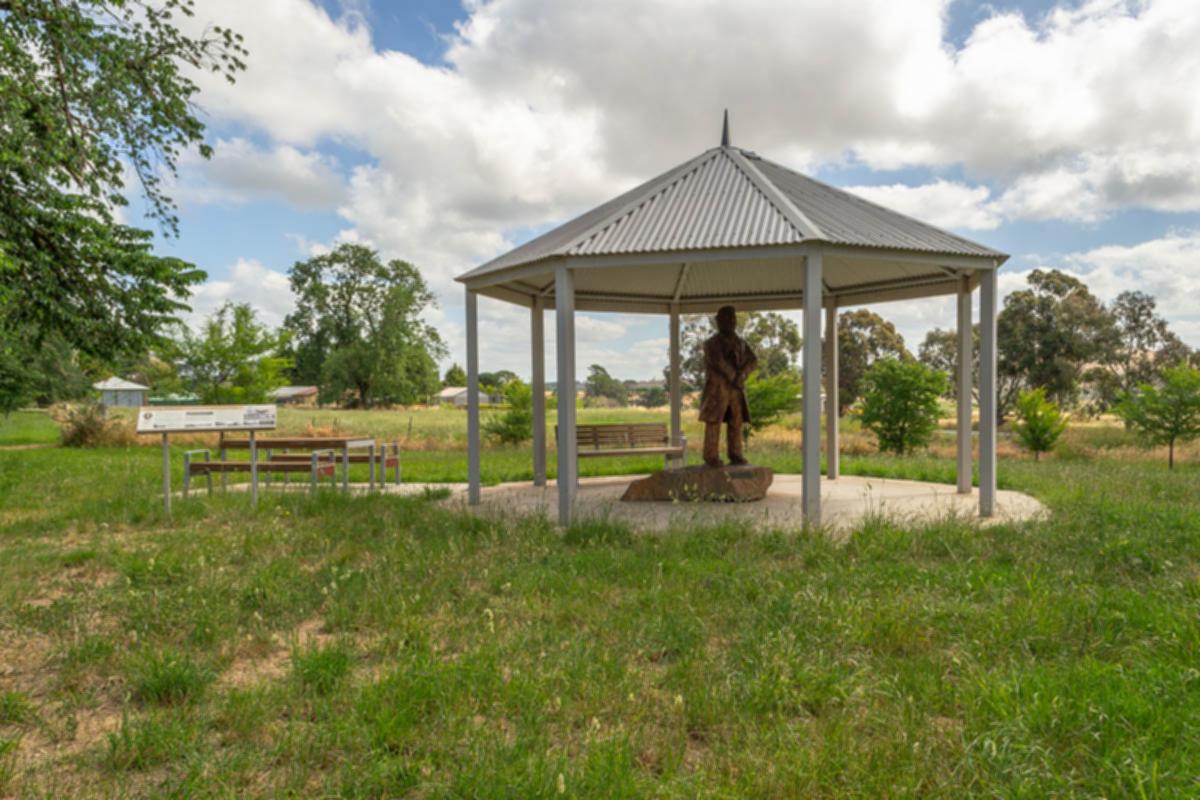Captain Hepburn - Founder of Smeaton 1838
"I was never sea-sick, but I had been for years sick of the sea, and was beginning to think seriously of turning settler" - Captain John Stuart Hepburn 1800-1857
Seaman turns squatter
Early Victorian explorer and pastoralist Captain John Stuart Hepburn was born in Whitekirk on the east coast of Scotland in 1800. After 21 years at sea on a voyage from Van Diemen's Land to Sydney in 1833 and as Master of "The Alice", Hepburn met John Gardiner, an ex banker, who talked Hepburn into joining him in a pastoral business.
In October 1836, Hepburn joined Gardiner "in a Port Philip speculation, to take a number of cattle to that place, overland", and in places followed the fresh tracks made by Major Mitchell's expedition from Portland.
Returning in 1838 he settled Smeaton Hill Run in country near the landmark of Koorootyngh, better known locally as Mount Kooroocheang, on the ancestral lands and traditional hunting grounds of the Dja Dja Wurrung people. Hepburn named it after Smeaton in Scotland situated just to the south of Whitekirk.
Settling home
In 1849 Captain Hepburn built Smeaton House, designed by architect John Gill, which was one of the first substantial homesteads in Victoria built in the style of a regency mansion and still stands today.
Hepburn and his wife Elizabeth were the first Europeans to settle in the district and here they raised ten children, eight of whom were born at Smeaton Hill Estate. A successful squatter, Hepburn remained the largest landholder in the district. At its height his estate was 33,000 acres.
The rich soil on the volcanic plain proved very productive and the township of Smeaton became widely known for its wheat, oats, potatoes and dairy. Many of the early Scottish farming families still reside in the district today.
Gold and grain
Gold was discovered in Smeaton in 1851 and the rushes soon followed. Later deep lead gold mining on the nearby famed Berry Leads, Victoria's richest deep lead system, continued on and off until 1940.
The discovery of gold greatly increased the population of the town and at its peak Smeaton supported seven hotels, two banks and a variety of other businesses, of which only the Cumberland Hotel, that once serviced the Cobb and Co coaches, survives today. An important enterprise in the town was Anderson's Mill, which was begun in 1861 and finally closed in 1957.
Smeaton settled swiftly following the initial gold rushes. The first Smeaton district land auctions that unlocked the land were held on 14 of July 1856. Five years later, in 1861, the first town allotments were sold. Today Smeaton is again primarily an agricultural community, sustaining two seed and grain processors.
The rotunda houses the wooden statue of Captain John Hepburn that was carved during the 175th anniversary celebrations in honour of his settlement of Smeaton.



